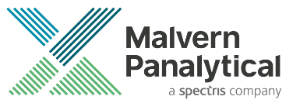Industrial instrumentation provider Malvern Panalytical is pleased to announce three new webinars for August 2018.
Characterising Hybrid Nanoparticles and Polymers with Gradient Properties using Multi-Detector GPC
The fabrication of core-shell nanoparticles, hollow-shell and other layered colloidal nanoparticle materials has been of high interest due to their controlled architectures and surface functionality.
They have been used as biosensors, theranostic and drug delivery vehicles, light emitting and solid state materials etc.
By coupling nanoparticles with various shell organic polymer materials, eg dendrimers, copolymers, and grafted polymers, it is possible to create high peripheral functionality and a host of gradient properties controlled by the size, shape and generational growth of the layers.
This talk will focus on the class of hybrid nanoparticle materials with interesting gradient properties produced by coupling a solid-state nanocrystal or nanoparticle (metal, semiconductor etc) with the properties of organic polymers and dendrimers.
The analytical characterisation of the synthesis and the fabrication of the solid-state films.
Speaker
Rigoberto Advincula PhD is professor at the Department of Macromolecular Science and Engineering, Case Western Reserve University in Cleveland, Ohio, US.
He is a fellow of the American Chemical Society (ACS), the Polymer Science and Engineering Division (ACS) and the Polymer Chemistry Division (ACS).
He received the Mark Scholar Award in 2013 and was elected to the World Economic Forum Future Materials Research Council in 2016.
He served as past Chair of the Polymer Division, ACS. He is editor in chief of MRS Communications, editor of Reactive and Functional Polymers and recent associate editor of Polymer Reviews.
His group does research in polymer synthesis and materials, nano-materials, colloidal science, 3D printing and ultra-thin films towards applications from smart coatings to biomedical devices.
Summary
- Date: 9 August 2018
- Time: 09:30-10:30 (GMT -05:00) Eastern [US and Canada]
- Event type: Webinar (Live)
- Language: English
Introduction to X-Ray Fluorescence (XRF) and Particle Characterisation in Cement
The careful control of process parameters in the cement industry is the difference between profit and failure in an industry where specifications are fixed and the variables are the feed composition and energy costs.
Raw materials, chiefly limestone, clay and supplementary materials, of differing compositions are needed to be blended to provide the correct phase chemistry after the rotary kiln furnace step.
The blending of these minerals is a skilled art and XRF allows the compositions to be assessed in the storage silos before production of the raw meal and afterwards in the finished cement.
Percentages of calcium, silica, iron, aluminum etc are routinely measured with XRF using ASTM and ISO standards to provide the guidelines.
Grinding of the cement is a highly energy intensive process. Indeed, 1% of the world’s electrical supply is used in this step.
Again international standards dictate the fineness to which cement is ground to different specifications and the successful companies are those that can manage the grinding and classification processes in the most cost-effective way.
Both laboratory and on-line particle size analysis provide this route to quality and production control.
This webinar provides an introduction to XRF and particle sizing as applied to the cement industry with an emphasis of the financial implications of control.
We’ll provide an introduction to the Epsilon XRF equipment and the Mastersizer 3000 laser diffraction particle size analyser, including looking at classifier efficiency (Tromp curve) in the latter.
Speakers
- Dr Alan Rawle C.Sci., B.Tech., Ph.D, C.Chem., FRSC, ATSC, applications manager / co-chair E56.02 Characterisation Sub-Committee of ASTM E56 Committee on Nanotechnology
- Stephen Williams, senior application specialist bench-top XRF
Summary
- Date: 21 August 2018
- Time: 10:30-11:30 (GMT -05:00) Eastern [US and Canada]
- Event type: Webinar (Live)
- Language: English
Climate and Hydrology Studies Leveraging ASD VNIR Spectral Snow Albedo Measurements
This webinar will discuss snow and ice applications and the use of Malvern Panalytical’s ASD FieldSpec® spectroradiometer for data measurement and analysis.
Speaker
Dr. McKenzie Skiles is an assistant professor in the Department of Geography at the University of Utah.
She holds a PhD in Geography from the University of California, Los Angeles, an MS degree in Geography, BS degrees in Geography and Environmental Studies and a GIS certificate, all from the University of Utah.
McKenzie is a snow optics specialist, knowledge which she has applied to one of her main research trajectories, investigating the impacts of mineral dust and black carbon deposition on snow.
Additional research interests include mountain and snow hydrology, snow energy balance, remote sensing of the cryosphere, and cryosphere-climate interaction.
Summary
- Date: 23 August 2018
- Time: 13:00-14:00 (GMT -05:00) Eastern [US and Canada]
- Event type: Webinar (Live)
- Language: English
To register for any of the above webinars, please visit the Malvern Panalytical website.










